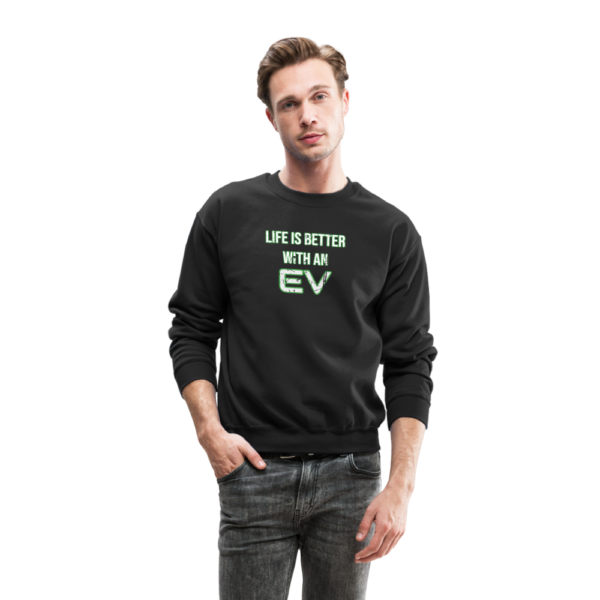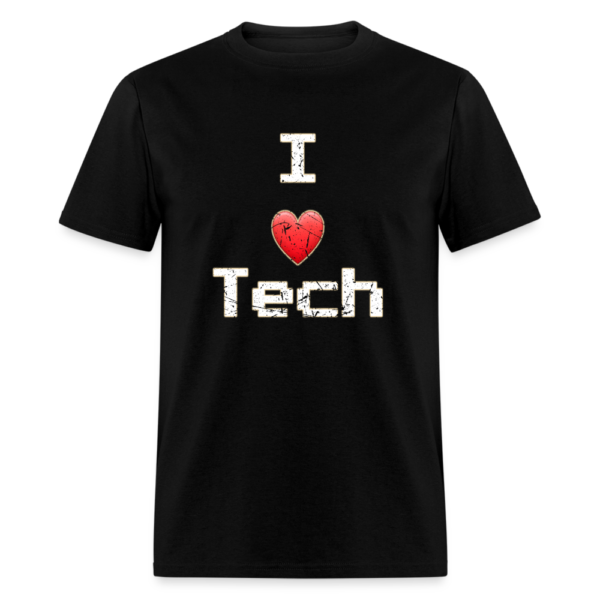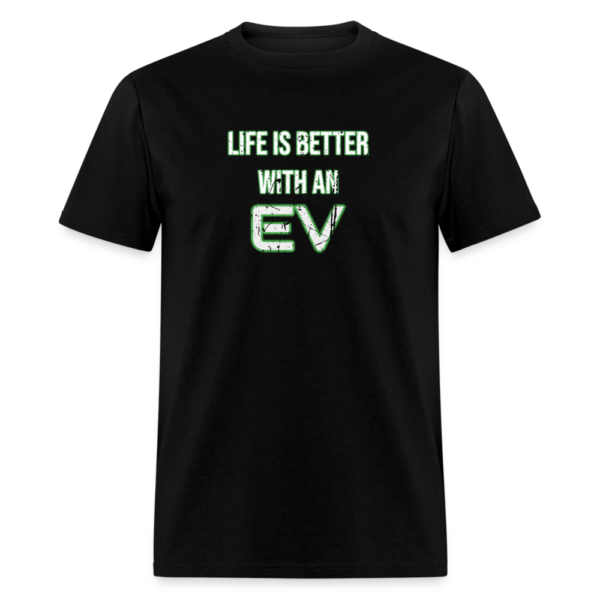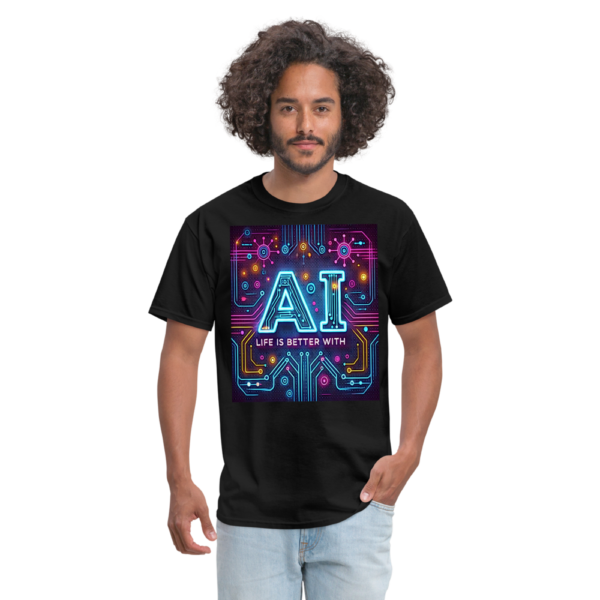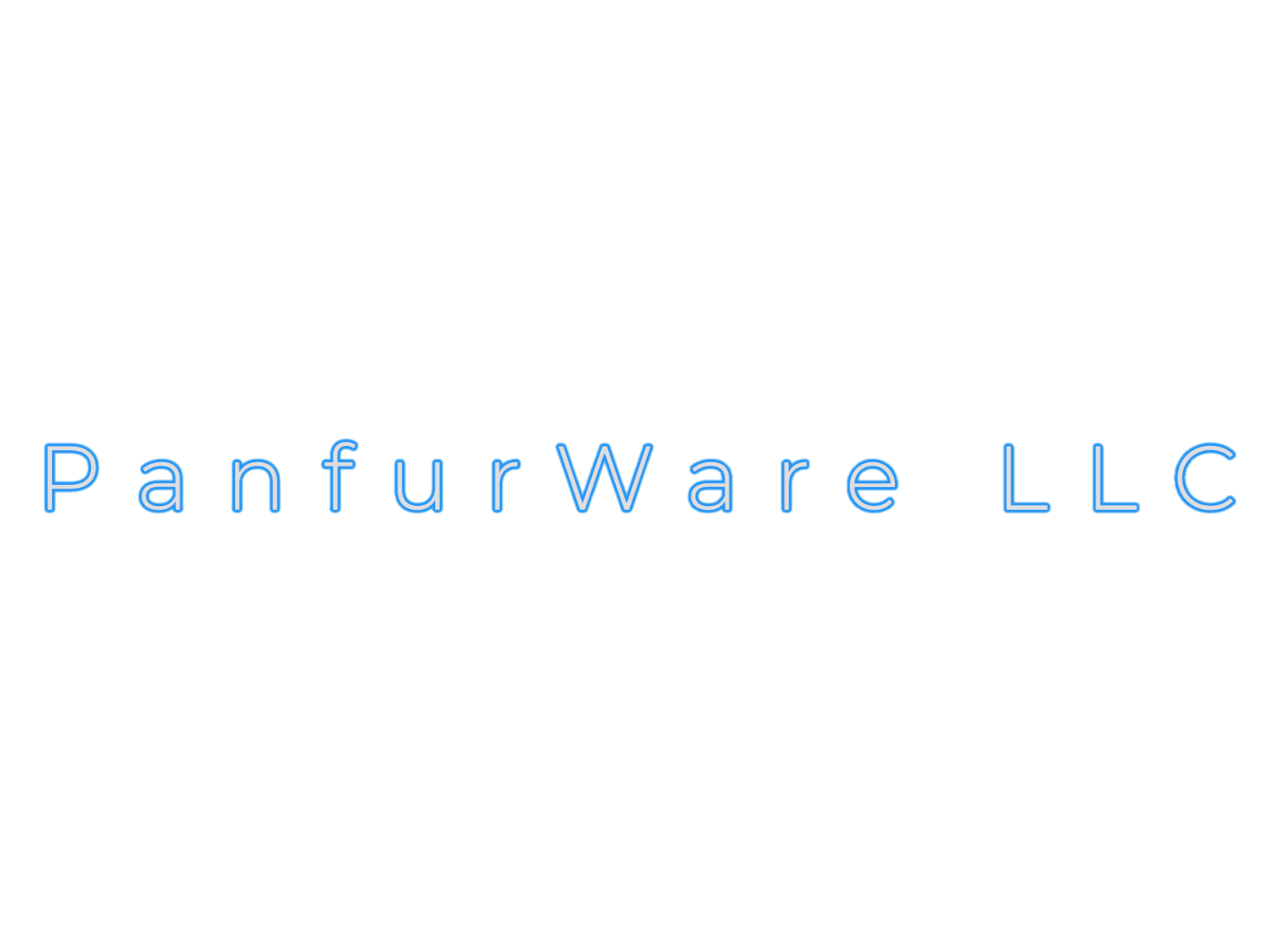Your cart is currently empty!
Category: TECH
DeFAI: Your AI-Powered DeFi Savior Tackles Complexity, Security, and Profit—All in One Place?
Free shipping over $50 for the month of April using code aprilship
What Is DeFAI? The Future of Simplified DeFi
DeFi (Decentralized Finance) revolutionized how we interact with money, but let’s be honest—it’s a maze. Enter DeFAI (Decentralized Finance AI), your all-in-one AI companion designed to cut through the chaos. Built by a team tired of fragmented wallets, confusing cross-chain swaps, and risky strategies, DeFAI merges AI smarts with decentralized governance to empower you. No jargon, no hassle—just smarter DeFi.Why DeFAI? Because DeFi Is Complex (But It Shouldn’t Be!)
DeFi’s promise of financial freedom comes with hurdles:- Multi-chain madness: Tracking assets across Ethereum, Solana, BSC, etc., is exhausting.
- Information overload: Which protocol is safe? What’s a good APY?
- Security risks: Rug pulls, hacks, and smart contract bugs keep investors up at night.
DeFAI tackles these pain points head-on with AI-driven tools that simplify decision-making while prioritizing security.
Is DeFAI Safe? Here’s How We Protect You
Safety is non-negotiable in DeFi, and DeFAI’s architecture reflects that:- DAO-Governed Security: The Titan Vault (DeFAI’s autonomous trading fund) is governed by community voting, ensuring transparency.
- Audited Smart Contracts: Regular third-party audits minimize vulnerabilities.
- Non-Custodial Control: Your keys, your crypto—DeFAI never holds your assets.
- AI Risk Analysis: Machine learning scans protocols for red flags before you invest.
While no DeFi platform is 100% risk-free, DeFAI layers AI and community oversight to tilt the odds in your favor.
DeFAI’s Game-Changing Features (No PhD Required!)
Multi-Chain Portfolio Analysis
Track all your assets—Ethereum NFTs, Solana staking rewards, Avalanche liquidity pools—in one dashboard. No more switching wallets or explorers.Hyper-Personalized Recommendations
DeFAI’s AI studies your risk tolerance, goals, and market trends to suggest strategies. Bull market? It might nudge you toward leveraged yield farming. Bear season? Stablecoin vaults with auto-compounding.Titan Vault: Let AI Trade for You (and Earn Together)
The Titan Vault isn’t just another bot. This DAO-governed fund uses AI to execute trades, arbitrage, and liquidity mining. Profits are split among $DEFAI stakers, and you can vote on strategies. Think of it as a hedge fund—but decentralized and open to everyone.Launch Stats That Speak Volumes
- $315K Initial Market Cap (Excl. Liquidity): A strong start with room to grow.
- 83% of $DEFAI in Circulation at TGE: Fair distribution reduces pump-and-dump risks.
Why DeFAI Beats Traditional DeFi Tools
- No More Analysis Paralysis: AI filters the noise, highlighting opportunities aligned with your goals.
- Community-Driven Updates: Proposals for new features? Vote as a $DEFAI holder.
- Cross-Chain Simplicity: Swap, stake, or borrow across chains without leaving DeFAI’s interface.
“But Is AI Really Trustworthy in DeFi?”
Fair question! DeFAI’s AI isn’t a black box:- Algorithms are trained on historical data and real-time market signals.
- Every recommendation includes a “Why This Works” breakdown.
- Community feedback continuously refines the AI’s logic.
It’s like having a crypto-savvy mentor who never sleeps.
How to Start with DeFAI (Even If You’re New to DeFi)
- Connect Your Wallet: MetaMask, Phantom, or Trust Wallet—your choice.
- Sync Your Portfolios: Let DeFAI scan your assets across chains.
- Set Preferences: Are you a conservative HODLer or a degen trader? Tell the AI.
- Explore Titan Vault: Deposit funds, stake $DEFAI, and watch the AI work.
Join the DeFi Revolution—Comment, Share, and Earn!
DeFAI isn’t just a tool—it’s a movement. The more the community grows, the smarter the AI becomes.Drop a comment below: What’s your biggest DeFi struggle? How could AI help?
Share this post to spread the word and earn a chance to win $DEFAI rewards!
Don’t Get Rekt Crypto Unisex Classic T-Shirt
$19.99Don’t Get Rekt Crypto Unisex Classic T-Shirt. Make a statement with the Don’t Get Rekt Crypto Unisex Classic T-Shirt! Perfect for crypto traders and enthusiasts, this comfortable and stylish tee is a must-have for anyone passionate about digital currencies and blockchain.
-

Hungry and Humble Football Player Flapping Arms Touchdown Celebration Unisex Classic T-Shirt #philly
$19.99 Select options This product has multiple variants. The options may be chosen on the product page -

Africatown in Philly Phrase Unisex Classic T-Shirt
$13.99 Select options This product has multiple variants. The options may be chosen on the product page -

Vintage Funny Cat Selfie UFO Alien Invasion Unisex Classic T-Shirt
$13.99 Select options This product has multiple variants. The options may be chosen on the product page -

Vintage Philly Underdogs German Shepherds Unisex Classic T-Shirt
$9.99 Select options This product has multiple variants. The options may be chosen on the product page -

Voxel Art Crypto Currency VS Stock Market Unisex Classic T-Shirt
$19.99 Select options This product has multiple variants. The options may be chosen on the product page
————————————————
We use AI GPT Chatbots to help with our content and may get some things wrong.
————————————————-
Tesla’s Tech Just Got Smarter: Cars Now Drive Themselves Off the Production Line!
Free shipping over $50 for the month of April using code aprilship
Tesla has recently achieved a significant milestone in automotive manufacturing by enabling its vehicles to autonomously navigate from the production line to the loading dock at its Fremont, California factory. This 1.2-mile journey is completed without human intervention, showcasing the company’s advancements in Full Self-Driving (FSD) technology within a controlled environment. driveteslacanada.ca
The process begins as newly assembled Tesla vehicles are activated and instructed to drive themselves along a predetermined path through the factory premises. Equipped with an array of sensors and cameras, these vehicles can detect and respond to various obstacles, adhere to lane markings, adjust their speed, and come to a stop when necessary. This autonomous navigation not only streamlines the logistics of moving vehicles within the factory but also reduces the need for human labor in these tasks, potentially leading to higher efficiency and lower operational costs.
Tesla’s CEO, Elon Musk, highlighted this development by stating, “Unsupervised full self-driving begins,” emphasizing the company’s commitment to advancing autonomous capabilities. au.investing.com
This initiative is part of Tesla’s broader strategy to integrate artificial intelligence and robotics into its manufacturing processes. By leveraging advanced AI for vision and planning, Tesla aims to develop a general solution for full self-driving, bi-pedal robotics, and beyond. tesla.com
However, it’s important to note that while this achievement marks progress, the autonomous driving demonstrated here operates within a highly controlled environment. The factory setting allows for a consistent and predictable route, free from the complexities and unpredictability of public roads. This controlled scenario is significantly different from the challenges faced in achieving full autonomy in everyday driving conditions, where variables such as traffic, weather, and human behavior introduce substantial unpredictability.
Tesla’s FSD technology has been a focal point of both innovation and scrutiny. The company has been actively developing and deploying autonomy at scale in vehicles, robots, and more, believing that an approach based on advanced AI for vision and planning, supported by efficient use of inference hardware, is the only way to achieve a general solution for full self-driving. tesla.com
Despite these advancements, Tesla’s FSD system has faced regulatory challenges. In October 2024, the National Highway Traffic Safety Administration (NHTSA) opened an investigation into approximately 2.4 million Tesla vehicles over concerns related to the FSD software following reports of collisions. reuters.com
The implementation of autonomous vehicle movement within the Fremont factory also aligns with a broader industry trend towards reducing reliance on traditional material handling equipment, such as forklifts, in favor of safer and more efficient alternatives. Manufacturers are increasingly adopting automation and robotic solutions to enhance workplace safety and productivity. wsj.com
In conclusion, Tesla’s recent implementation of autonomous vehicle navigation from the production line to the loading dock at its Fremont factory represents a noteworthy advancement in the application of FSD technology within a controlled manufacturing environment. While this development showcases the potential for increased efficiency and reduced labor costs, it also underscores the ongoing challenges and complexities associated with achieving full autonomy in real-world driving conditions.
We invite you to share your thoughts on Tesla’s latest advancements in autonomous driving technology. Do you believe this development brings us closer to fully autonomous vehicles on public roads? What are your perspectives on the challenges and implications of such technologies? Please leave your comments below and share this article with others to continue the conversation.
Vintage Style Life Is Better With An EV Crewneck Sweatshirt
$26.99Vintage Style Life Is Better With An EV Crewneck Sweatshirt. Embrace sustainability with the Vintage Style Life Is Better With An EV Crewneck Sweatshirt. This cozy, retro-inspired sweatshirt is perfect for those who want to express their love for electric vehicles and a greener future. With a stylish design that pairs well with any casual look, it’s a must-have for eco-conscious individuals. Made from soft, high-quality fabric, this sweatshirt keeps you comfortable while showcasing your passion for clean energy and innovation.
-

Hungry and Humble Football Player Flapping Arms Touchdown Celebration Unisex Classic T-Shirt #philly
$19.99 Select options This product has multiple variants. The options may be chosen on the product page -

Africatown in Philly Phrase Unisex Classic T-Shirt
$13.99 Select options This product has multiple variants. The options may be chosen on the product page -

Vintage Funny Cat Selfie UFO Alien Invasion Unisex Classic T-Shirt
$13.99 Select options This product has multiple variants. The options may be chosen on the product page -

Vintage Philly Underdogs German Shepherds Unisex Classic T-Shirt
$9.99 Select options This product has multiple variants. The options may be chosen on the product page -

Voxel Art Crypto Currency VS Stock Market Unisex Classic T-Shirt
$19.99 Select options This product has multiple variants. The options may be chosen on the product page
————————————————
We use AI GPT Chatbots to help with our content and may get some things wrong.
————————————————-
-
Jim Cramer Endorses Bitcoin: A New Chapter or the Same Old Story?
Free shipping over $50 for the month of April using code aprilship
Jim Cramer, the flamboyant host of CNBC’s Mad Money, has stirred the crypto waters yet again. In a recent broadcast, Cramer openly endorsed Bitcoin as a valuable investment, revealing that he himself owns Bitcoin and suggesting that others should consider investing in it too. However, he took a surprising jab at companies like MicroStrategy, subtly implying that betting on Bitcoin directly might be a smarter move than investing in companies whose fortunes are tied to the cryptocurrency. As expected, this bold endorsement sent ripples across the financial world, sparking a flurry of reactions online.
Bitcoin: A Hot Topic Once Again
Bitcoin is no stranger to being in the spotlight, and Cramer’s endorsement adds yet another chapter to its storied history. The cryptocurrency, often referred to as “digital gold,” has experienced a rollercoaster of highs and lows over the past decade. From being dismissed as a fringe experiment to becoming a trillion-dollar asset class at its peak, Bitcoin has proven to be as polarizing as it is revolutionary.
Cramer’s support for Bitcoin aligns with a growing acceptance of the digital currency among mainstream investors. Institutions, corporations, and even governments have started to dabble in Bitcoin, either as an investment vehicle or as a hedge against inflation. Yet, Cramer’s sudden advocacy raises eyebrows, not just because of Bitcoin’s inherent volatility but also because of his own track record.
The Internet Reacts: A Mixed Bag of Praise and Skepticism
When Jim Cramer speaks, the financial world listens—but not always in agreement. His endorsement of Bitcoin sparked a lively debate online, with reactions ranging from enthusiastic support to light-hearted mockery. Many crypto enthusiasts took his words as a validation of Bitcoin’s legitimacy, treating it as a potential buy signal.
However, a more skeptical crowd saw Cramer’s endorsement through a different lens. Known for his unpredictable predictions, Cramer has earned a reputation for having the uncanny ability to jinx his own recommendations. This phenomenon has become so notable that it has birthed countless memes and social media posts. The humor often stems from the fact that stocks or assets Cramer highlights tend to perform poorly shortly after his endorsement, leaving some to jest that Bitcoin might be in for a rough ride.
One viral tweet joked, “Jim Cramer likes Bitcoin? Guess it’s time to sell everything,” while another quipped, “I trust Bitcoin, but do I trust Jim Cramer trusting Bitcoin?” This divide in perception underscores the lingering skepticism surrounding both Bitcoin and Cramer’s financial foresight.
Why Bitcoin and Not MicroStrategy?
Cramer’s dismissal of companies like MicroStrategy is worth noting. MicroStrategy, led by CEO Michael Saylor, has become synonymous with Bitcoin due to its aggressive investment in the cryptocurrency. The company’s strategy revolves around acquiring and holding vast amounts of Bitcoin, essentially making its stock a proxy for Bitcoin’s performance.
By suggesting that individuals invest directly in Bitcoin rather than through companies like MicroStrategy, Cramer might be advocating for simplicity and direct exposure. However, this stance could also stem from a broader caution against tying investments to the operational risks of a single company. MicroStrategy’s approach has faced criticism for being overly reliant on Bitcoin, leaving it vulnerable to market fluctuations.
The Broader Debate: Bitcoin’s Future Value
Cramer’s endorsement comes at a time when Bitcoin’s future value is a hotly debated topic. Proponents argue that Bitcoin’s scarcity, decentralized nature, and growing adoption make it a reliable store of value and a hedge against inflation. They see it as a digital counterpart to gold, with the potential to outperform traditional assets in the long run.
On the other hand, skeptics point to Bitcoin’s extreme volatility, regulatory uncertainties, and environmental concerns as significant barriers to its widespread adoption. They argue that Bitcoin is more speculative than practical, with its price driven largely by hype and market sentiment rather than intrinsic value.
Cramer’s endorsement may add fuel to this ongoing debate. While his support lends credibility to Bitcoin in the eyes of some, others remain wary of his track record and the broader challenges facing the cryptocurrency market.
The “Cramer Effect”: A Curse or Coincidence?
Jim Cramer’s knack for making waves in the financial world is undeniable, but his track record has led to the coining of the so-called “Cramer Effect.” This tongue-in-cheek phenomenon refers to the seemingly inexplicable tendency for assets he endorses to perform poorly shortly after his recommendation. While this is more likely a coincidence than an actual curse, it has become a running joke in financial circles.
Bitcoin investors, naturally, are watching closely to see whether Cramer’s endorsement will follow this pattern. Some have even joked that his support might serve as a contrarian indicator, signaling a short-term dip before a potential rebound.
Should You Listen to Cramer?
As with any investment advice, it’s essential to approach Cramer’s endorsement with a critical eye. While his enthusiasm for Bitcoin reflects a broader trend of growing acceptance, it’s crucial to conduct your own research and consider your risk tolerance before making any investment decisions.
Bitcoin remains a high-risk, high-reward asset, and its performance is influenced by a complex web of factors, including market sentiment, regulatory developments, and technological advancements. While Cramer’s endorsement may signal a positive outlook, it’s not a guarantee of success.
Join the Conversation
What do you think about Jim Cramer’s endorsement of Bitcoin? Is it a sign of Bitcoin’s growing legitimacy, or does it raise more questions than answers? Share your thoughts in the comments below, and don’t forget to share this post with friends and fellow investors. Let’s keep the conversation going!
Don’t Get Rekt Crypto Unisex Classic T-Shirt
$19.99Don’t Get Rekt Crypto Unisex Classic T-Shirt. Make a statement with the Don’t Get Rekt Crypto Unisex Classic T-Shirt! Perfect for crypto traders and enthusiasts, this comfortable and stylish tee is a must-have for anyone passionate about digital currencies and blockchain.
-

Hungry and Humble Football Player Flapping Arms Touchdown Celebration Unisex Classic T-Shirt #philly
$19.99 Select options This product has multiple variants. The options may be chosen on the product page -

Africatown in Philly Phrase Unisex Classic T-Shirt
$13.99 Select options This product has multiple variants. The options may be chosen on the product page -

Vintage Funny Cat Selfie UFO Alien Invasion Unisex Classic T-Shirt
$13.99 Select options This product has multiple variants. The options may be chosen on the product page -

Vintage Philly Underdogs German Shepherds Unisex Classic T-Shirt
$9.99 Select options This product has multiple variants. The options may be chosen on the product page -

Voxel Art Crypto Currency VS Stock Market Unisex Classic T-Shirt
$19.99 Select options This product has multiple variants. The options may be chosen on the product page
————————————————
We use AI GPT Chatbots to help with our content and may get some things wrong.
————————————————-
-
DeepSeek AI’s Janus-Pro-7B: A Game-Changer in Multimodal AI Technology?
Free shipping over $50 for the month of April using code aprilship
In the rapidly evolving world of artificial intelligence, a groundbreaking new model has just entered the scene, capturing global attention and sparking discussions about the future of AI. DeepSeek AI, a leader in cutting-edge technology, has officially launched Janus-Pro-7B, an open-source AI model that is making waves for its unparalleled multimodal capabilities. But what sets Janus-Pro-7B apart from competitors like OpenAI’s DALL-E 3 and Stable Diffusion? Let’s dive in to explore the model’s unique features, industry benchmarks, and the implications for the global AI landscape.
What Makes Janus-Pro-7B Unique?
Janus-Pro-7B has emerged as a trailblazer in the AI world by excelling in both image generation and understanding. Unlike traditional models that often struggle to balance performance across multiple modalities, Janus-Pro-7B introduces a revolutionary approach: decoupling visual encoding. This innovative design allows the model to separately optimize the processes of understanding and generating images, resulting in significant performance gains.
With its lightweight 7-billion parameter architecture, Janus-Pro-7B is highly efficient, enabling it to run smoothly on consumer-grade GPUs. This opens up new opportunities for smaller developers and organizations that have been previously restricted by the high computational demands of other state-of-the-art models.
How Does It Compare to Competitors?
When it comes to benchmarks, Janus-Pro-7B has set new standards by outperforming industry giants like DALL-E 3 and Stable Diffusion in critical evaluations such as GenEval and DPG-Bench.
- GenEval Benchmark: This widely recognized evaluation measures an AI model’s ability to generate high-quality images from textual descriptions. Janus-Pro-7B achieved top-tier results, demonstrating its advanced understanding of complex prompts and nuanced image generation capabilities.
- DPG-Bench: Focused on assessing the precision and diversity of generated outputs, Janus-Pro-7B surpassed competitors by producing more accurate and varied results, making it a versatile tool for applications ranging from content creation to scientific visualization.
These achievements highlight Janus-Pro-7B’s ability to deliver results that are not only visually stunning but also contextually accurate—a significant leap forward in the multimodal AI domain.
The Role of Open-Source in AI Innovation
One of the most exciting aspects of Janus-Pro-7B is its open-source nature. By making this powerful model accessible to the global AI community, DeepSeek AI is fostering a collaborative ecosystem where developers, researchers, and organizations can contribute to its evolution. Open-source models like Janus-Pro-7B democratize access to cutting-edge technology, empowering smaller players to innovate and compete on a global scale.
This move also aligns with the growing trend of transparency in AI development, addressing concerns about proprietary models and their potential for misuse. By opening the doors to its technology, DeepSeek AI is setting a precedent for responsible AI innovation.
The Global Impact of Janus-Pro-7B
The release of Janus-Pro-7B has far-reaching implications for the global AI industry. As a product of China-based DeepSeek AI, the model underscores the country’s growing influence in the field of artificial intelligence. Historically dominated by companies from the U.S. and Europe, the AI landscape is now witnessing a shift, with China emerging as a key player in developing cutting-edge technologies.
This shift has sparked discussions about the competitive dynamics of AI innovation on the global stage. Will the release of Janus-Pro-7B prompt other industry leaders to accelerate their efforts? Could this lead to a new wave of advancements that push the boundaries of what AI can achieve? One thing is certain: the competition is heating up, and the beneficiaries will be end-users who gain access to increasingly sophisticated tools.
Applications of Janus-Pro-7B: Transforming Industries
The versatility of Janus-Pro-7B opens the door to a wide range of applications across various industries:
- Content Creation: Graphic designers, artists, and content creators can leverage the model’s superior image generation capabilities to produce high-quality visuals with minimal effort.
- Education and Training: Educational platforms can use Janus-Pro-7B to develop interactive learning materials that combine text and images, enhancing the learning experience.
- Healthcare: The model’s ability to understand and generate detailed visuals could revolutionize medical imaging, aiding in diagnostics and treatment planning.
- Entertainment: From video game design to movie production, Janus-Pro-7B can streamline creative processes, enabling creators to bring their visions to life faster and more effectively.
Challenges and the Road Ahead
While the launch of Janus-Pro-7B is undoubtedly a milestone, it also raises important questions about the ethical and societal implications of such advanced AI technologies. As with any powerful tool, ensuring its responsible use will be critical. DeepSeek AI has emphasized its commitment to ethical AI development, but the broader community must also play a role in establishing guidelines and safeguards.
Looking ahead, the success of Janus-Pro-7B is likely to inspire further innovation, not just within DeepSeek AI but across the entire industry. As competitors strive to match or surpass its capabilities, we can expect to see a new era of AI models that are more powerful, efficient, and accessible than ever before.
Join the Conversation
What are your thoughts on the launch of Janus-Pro-7B? Do you believe it will reshape the AI industry, or are there other models that could take the spotlight? Share your insights in the comments below and let’s discuss how this exciting development could impact the future of AI.
Don’t forget to share this post with your network to keep the conversation going. Together, we can explore the possibilities and challenges that lie ahead in this dynamic field.
Cracked and Cooking Tech Dev Unisex Classic T-Shirt
$19.99Cracked and Cooking Tech Dev Unisex Classic T-Shirt. Show your love for coding with the “Cracked and Cooking Tech Dev” unisex classic T-shirt. Perfect for developers and tech enthusiasts who enjoy a little humor with their work.
-

Hungry and Humble Football Player Flapping Arms Touchdown Celebration Unisex Classic T-Shirt #philly
$19.99 Select options This product has multiple variants. The options may be chosen on the product page -

Africatown in Philly Phrase Unisex Classic T-Shirt
$13.99 Select options This product has multiple variants. The options may be chosen on the product page -

Vintage Funny Cat Selfie UFO Alien Invasion Unisex Classic T-Shirt
$13.99 Select options This product has multiple variants. The options may be chosen on the product page -

Vintage Philly Underdogs German Shepherds Unisex Classic T-Shirt
$9.99 Select options This product has multiple variants. The options may be chosen on the product page -

Voxel Art Crypto Currency VS Stock Market Unisex Classic T-Shirt
$19.99 Select options This product has multiple variants. The options may be chosen on the product page
————————————————
We use AI GPT Chatbots to help with our content and may get some things wrong.
————————————————-
The Creation of the XML File: Revolutionizing Data Exchange in the Digital Age
Free shipping over $50 for the month of April using code aprilship
The Extensible Markup Language (XML) file has been a cornerstone of modern technology, quietly shaping how we interact with data online and offline. While the concept of XML might seem straightforward today, its creation was a groundbreaking innovation that laid the foundation for many of the technologies we rely on daily. Let’s dive into the origins of XML, its uses, and how it has transformed technology, paving the way for advancements that continue to shape the future.
A Brief History: Who Created XML?
The XML file format was developed by the World Wide Web Consortium (W3C) in the late 1990s, spearheaded by Jon Bosak. Often referred to as the “Father of XML,” Bosak led a dedicated team of experts to create a language that would simplify data sharing across different systems and platforms. The goal was to address the limitations of existing markup languages, such as SGML (Standard Generalized Markup Language), and create a more flexible, lightweight, and universally compatible solution.
Jon Bosak envisioned XML as a way to make data both human-readable and machine-readable. His leadership and vision helped shape XML into a standard that has since become indispensable in the tech world. Though Bosak’s name may not be as well-known as some tech icons, his contributions have had a profound and lasting impact on the digital landscape.
What is XML Used For?
XML is a markup language designed to store and transport data. Unlike HTML, which is focused on displaying data, XML is all about structuring information in a way that makes it easy to share, process, and store. Here are some key uses of XML:
- Web Development: XML forms the backbone of many web technologies, enabling data exchange between servers and clients.
- APIs and Web Services: Many APIs rely on XML to format requests and responses, making it easier for different systems to communicate.
- Document Storage: XML is often used to store structured documents, such as configuration files, technical manuals, and even eBooks.
- Data Interchange: Industries like healthcare, finance, and e-commerce use XML to standardize data exchange.
- Multimedia: Formats like SVG (Scalable Vector Graphics) and X3D (3D graphics) are XML-based, showing its versatility in various applications.
The Innovation Behind XML
The true brilliance of XML lies in its simplicity and adaptability. By defining a set of rules for encoding documents in a format that is both human-readable and machine-readable, XML has become a universal standard for data exchange. Here are some of the key innovations that XML brought to the table:
- Platform Independence: XML can be used on any platform, making it a universal solution for data sharing.
- Customizability: Developers can create their own tags to suit specific needs, giving them the flexibility to structure data in virtually any way.
- Validation: XML supports schemas and document type definitions (DTDs), ensuring data consistency and accuracy.
- Readability: Unlike binary formats, XML is text-based, which makes it easier to debug and maintain.
- Extensibility: XML’s design allows it to integrate seamlessly with other technologies and evolve alongside them.
How XML Changed Technology
XML’s introduction revolutionized the way data is handled and exchanged. Before XML, data sharing between systems often required complex, proprietary solutions. XML simplified this by providing a universal framework, leading to several major technological advancements:
- E-Commerce Boom: XML enabled seamless communication between e-commerce platforms, payment gateways, and inventory systems, accelerating the growth of online shopping.
- Cloud Computing: Many cloud-based services rely on XML to manage and exchange data between distributed systems.
- Interoperability: XML’s standardization made it easier for different technologies and platforms to work together, fostering innovation.
- Content Management: XML laid the groundwork for content management systems (CMS) by simplifying how data is stored and retrieved.
- Big Data and Analytics: XML’s structured format made it an essential tool for managing and analyzing large datasets.
XML in the Future: A Lasting Legacy
While newer technologies like JSON (JavaScript Object Notation) have gained popularity, XML remains relevant and widely used. Its robustness, versatility, and well-established standards ensure its continued importance in various fields. Here are some ways XML is poised to impact the future:
- AI and Machine Learning: XML’s structured format is ideal for training datasets and integrating AI systems with existing technologies.
- IoT (Internet of Things): XML can help standardize data exchange between IoT devices, ensuring compatibility and scalability.
- Digital Preservation: As a human-readable format, XML is ideal for archiving digital content, ensuring accessibility for future generations.
- Blockchain: XML can play a role in enhancing blockchain applications by standardizing data formats and enabling better interoperability.
Why XML Matters More Than Ever
Despite being over two decades old, XML continues to be a vital part of the technological ecosystem. Its adaptability and widespread adoption have ensured its place as a foundational technology. As the digital world becomes more interconnected, XML’s ability to facilitate seamless data exchange will only become more valuable.
Join the Conversation
What are your thoughts on XML and its impact on technology? How do you see it evolving in the future? We’d love to hear your insights and experiences. Share your thoughts in the comments below, and don’t forget to share this article with others who might find it interesting!
Vintage I Love Tech Unisex Classic T-Shirt
$13.99“Geek out in style with the Vintage ‘I Love Tech’ T-Shirt! Perfect for tech lovers, gadget enthusiasts, and anyone who’d rather be coding—show off your love for all things techy!”
-

Hungry and Humble Football Player Flapping Arms Touchdown Celebration Unisex Classic T-Shirt #philly
$19.99 Select options This product has multiple variants. The options may be chosen on the product page -

Africatown in Philly Phrase Unisex Classic T-Shirt
$13.99 Select options This product has multiple variants. The options may be chosen on the product page -

Vintage Funny Cat Selfie UFO Alien Invasion Unisex Classic T-Shirt
$13.99 Select options This product has multiple variants. The options may be chosen on the product page -

Vintage Philly Underdogs German Shepherds Unisex Classic T-Shirt
$9.99 Select options This product has multiple variants. The options may be chosen on the product page -

Voxel Art Crypto Currency VS Stock Market Unisex Classic T-Shirt
$19.99 Select options This product has multiple variants. The options may be chosen on the product page
————————————————
We use AI GPT Chatbots to help with our content and may get some things wrong.
————————————————-
Tesla FSD: Revolutionizing Mobility for the Handicapped Community?
Free shipping over $50 for the month of April using code aprilship
Tesla’s Full Self-Driving (FSD) technology is more than just a breakthrough in automotive innovation; it’s a potential game-changer for individuals with disabilities. As society continues to emphasize inclusivity, Tesla’s advancements in autonomous driving could offer newfound independence and mobility to millions. Let’s explore how Tesla’s FSD technology can transform lives for the handicapped community and why this innovation is sparking excitement around the globe.
What is Tesla FSD?
Tesla’s Full Self-Driving is an advanced driver-assistance system (ADAS) designed to enable Tesla vehicles to drive autonomously under various conditions. Unlike basic autopilot features, FSD aims to navigate complex scenarios such as city streets, highways, parking lots, and more. From recognizing traffic signals to avoiding pedestrians, FSD software is constantly evolving through Tesla’s over-the-air updates.
While the technology is not yet at Level 5 autonomy—the stage where no human intervention is required—it is steadily advancing. Tesla CEO Elon Musk has expressed confidence in FSD’s ability to achieve full autonomy in the near future, making it a cornerstone of Tesla’s vision for the future of transportation.
The Challenges of Mobility for the Handicapped
For many individuals with physical disabilities, transportation can be a significant hurdle. Public transit systems, while useful, are not always accessible or convenient. Additionally, hiring personal drivers or relying on family members can be costly and limit one’s sense of independence. Adapted vehicles, while helpful, often require manual operation that not everyone is capable of.
This is where Tesla’s FSD comes into the picture. With its ability to perform tasks that traditionally require human intervention, FSD can eliminate many of these barriers, offering a solution that is both practical and empowering.
How Tesla FSD Can Empower Handicapped Individuals
1. Autonomous Navigation
Tesla’s FSD can handle complex driving tasks, including navigating city streets, highways, and parking spaces. For individuals who are unable to operate a vehicle manually, this capability can provide a level of mobility previously unimaginable. Whether it’s commuting to work, visiting friends, or running errands, FSD enables handicapped individuals to travel without depending on others.
2. Accessibility Features
Tesla’s vehicles already include user-friendly features such as voice commands, touchscreen interfaces, and smartphone integration. These technologies can be tailored to the needs of disabled users. For example, a visually impaired person could use voice commands to instruct the car, while someone with limited hand mobility could rely on the touchscreen or their phone.
3. Improved Safety
Safety is a paramount concern for all drivers, but it’s especially critical for those with disabilities. Tesla’s FSD is designed to reduce accidents caused by human error, such as distracted or impaired driving. For handicapped users, this safety net can offer peace of mind, knowing that the vehicle is actively working to avoid potential hazards.
4. Door-to-Door Convenience
Tesla’s Summon feature allows the car to drive itself to the owner’s location within a parking lot or driveway. This could be a lifesaver for individuals with limited mobility, as they wouldn’t need to walk long distances to reach their vehicle. Future updates may even expand this functionality to more complex scenarios, such as navigating larger areas or dropping users off at specific entrances.
5. Cost Efficiency
While the initial investment in a Tesla vehicle equipped with FSD may seem high, the long-term cost savings can be significant. Handicapped individuals who currently spend money on specialized transportation services or personal drivers could find FSD to be a more economical and sustainable alternative.
Potential Use Cases for FSD in the Handicapped Community
- Commuting to Work: Individuals with disabilities often face challenges in accessing reliable transportation to and from their workplace. Tesla’s FSD can bridge this gap, ensuring timely and stress-free commutes.
- Medical Appointments: Frequent doctor visits or therapy sessions are common for many in the handicapped community. FSD can provide a dependable solution for these essential trips.
- Leisure Activities: Whether it’s going to a movie, visiting a park, or attending social events, FSD offers the freedom to participate in leisure activities without logistical hurdles.
- Long-Distance Travel: Road trips become more feasible with Tesla’s extensive Supercharger network and FSD’s capabilities. Handicapped individuals can enjoy the journey without worrying about driving fatigue or accessibility issues.
Overcoming Barriers to Adoption
Despite its potential, the widespread adoption of Tesla’s FSD among the handicapped community faces certain challenges:
- Regulatory Approvals: Autonomous driving technology is subject to stringent regulations that vary by region. Gaining approval for full autonomy is a critical step toward making FSD universally accessible.
- Affordability: While Tesla vehicles are considered premium products, the company has been working to lower costs. Initiatives like the Model 3 and Model Y have made Tesla more accessible to a broader audience. Financing options and government incentives for electric vehicles can further ease the financial burden.
- Awareness and Education: Many people are still unfamiliar with the capabilities of FSD and how it can benefit those with disabilities. Tesla and advocacy groups need to collaborate to spread awareness and provide training to potential users.
- Technology Limitations: While FSD is highly advanced, it is not yet perfect. Continued updates and testing are necessary to ensure the technology can handle all scenarios reliably.
A Brighter Future with Tesla FSD
Tesla’s Full Self-Driving technology holds immense promise for enhancing mobility and independence for the handicapped community. By addressing key barriers and refining its features, Tesla can play a pivotal role in creating a more inclusive world. As FSD continues to evolve, the dream of seamless, autonomous mobility for everyone—regardless of physical ability—moves closer to reality.
Share Your Thoughts
How do you think Tesla FSD can change the lives of handicapped individuals? Are there specific features you’d like to see in future updates? Let us know in the comments below! If you found this article insightful, don’t forget to share it with your friends and family to spread the word about this transformative technology.
Vintage Style Life is Better With An EV Unisex Classic T-Shirt
$13.99Vintage Style Life is Better With An EV Unisex Classic T-Shirt. Celebrate the electric lifestyle with this Vintage Style Life is Better With An EV Unisex Classic T-Shirt! Designed for eco-conscious drivers and EV enthusiasts, this shirt combines comfort and style with a retro-inspired look. Perfect for anyone who believes life is better with an electric vehicle!
-

Hungry and Humble Football Player Flapping Arms Touchdown Celebration Unisex Classic T-Shirt #philly
$19.99 Select options This product has multiple variants. The options may be chosen on the product page -

Africatown in Philly Phrase Unisex Classic T-Shirt
$13.99 Select options This product has multiple variants. The options may be chosen on the product page -

Vintage Funny Cat Selfie UFO Alien Invasion Unisex Classic T-Shirt
$13.99 Select options This product has multiple variants. The options may be chosen on the product page -

Vintage Philly Underdogs German Shepherds Unisex Classic T-Shirt
$9.99 Select options This product has multiple variants. The options may be chosen on the product page -

Voxel Art Crypto Currency VS Stock Market Unisex Classic T-Shirt
$19.99 Select options This product has multiple variants. The options may be chosen on the product page
————————————————
We use AI GPT Chatbots to help with our content and may get some things wrong.
————————————————-
The Future of AI: Exploring ChatGPT Operator Through Rowan Cheung’s (@rowancheung) Insights
Free shipping over $50 for the month of April using code aprilship
Rowan Cheung, a prominent voice in the AI and tech community, has once again captured our attention by unveiling his early access to ChatGPT Operator. This revolutionary AI agent, developed by OpenAI, takes autonomous actions across the web on behalf of users. Its potential spans numerous domains, from simplifying everyday tasks to solving complex problems. Let’s dive into Rowan’s findings, the capabilities of ChatGPT Operator, and why this tool is poised to redefine the AI landscape.
What Is ChatGPT Operator?
ChatGPT Operator is an advanced AI agent designed to execute web-based tasks autonomously. Unlike traditional AI chatbots, which are largely reactive, this tool proactively takes actions based on user input and contextual understanding. Whether it’s browsing websites, interacting with APIs, or making decisions in real-time, ChatGPT Operator exemplifies the next step in AI-driven automation.
Rowan Cheung’s early access tests have revealed impressive use cases that highlight its ability to navigate challenges, integrate with external tools, and deliver results tailored to user needs.
The 4 Most Impressive Use Cases Demonstrated by Rowan Cheung
1. Ordering Dinner Ingredients Based on a Picture and Recipe
Imagine snapping a picture of a recipe and having an AI agent automatically order all the required ingredients for delivery. Rowan demonstrated this use case, showcasing the AI’s ability to interpret images, extract key information, and integrate with online grocery platforms. This feature alone could save users hours of meal prep and planning.
2. Planning a Weekend Trip Using Hidden Gems from Reddit
Rowan’s second use case highlighted the AI’s impressive decision-making skills. By pulling insights from Reddit posts based on the user’s budget and interests, ChatGPT Operator curated a personalized weekend itinerary. When faced with a Reddit block, the AI seamlessly switched to Bing, appending “Reddit” to its queries. This adaptability underlines its potential for personalized travel planning.
3. Conducting Crypto Investment Research
Navigating the volatile crypto market is no easy feat, but ChatGPT Operator steps up to the challenge. Rowan demonstrated its ability to identify promising tokens while addressing human verification hurdles, such as CAPTCHAs. When prompted, it notified Rowan to manually intervene, ensuring seamless progress.
4. Booking Flights with Integrated Preferences
Rowan shared how ChatGPT Operator booked a one-way flight from Zurich to Vienna. The AI agent handled preferences like departure times and pricing but required user input for payment details. This hybrid approach balances automation with necessary manual interventions for secure and accurate outcomes.
Why ChatGPT Operator Is a Game-Changer
The versatility of ChatGPT Operator lies in its ability to:
- Adapt and Evolve: From handling CAPTCHAs to switching strategies, this AI tool demonstrates remarkable adaptability.
- Integrate with Tools: Its seamless interaction with external platforms, such as booking systems and e-commerce sites, enhances usability.
- Balance Automation and Control: While the AI takes charge of routine tasks, it allows manual interventions where necessary.
- Personalize User Experiences: Whether it’s travel planning or fitness routines, ChatGPT Operator delivers highly customized outputs.
These features make it a valuable asset for individuals and businesses aiming to optimize their workflows and decision-making processes.
The Future of Autonomous AI Agents
Rowan Cheung’s experiments with ChatGPT Operator are just the beginning. As the technology evolves, we can expect even greater innovations:
- Advanced Natural Language Processing (NLP): Future iterations could better understand context, making interactions even more intuitive.
- Broader Integrations: Enhanced compatibility with apps, devices, and IoT systems could expand its capabilities.
- Improved Security Measures: As AI agents gain access to sensitive information, robust security protocols will be critical to ensure user trust.
Join the Conversation!
Rowan Cheung’s insights into ChatGPT Operator paint an exciting picture of what’s possible with AI-driven automation. What do you think about these use cases? Are there tasks you’d like to see automated by AI?
Let us know in the comments below! Don’t forget to share this post with your friends and join the discussion about the future of AI. Together, we can explore the endless possibilities that tools like ChatGPT Operator bring to the table.
Life Is Better With AI Unisex Classic T-Shirt
$19.99Life Is Better With AI Unisex Classic T-Shirt. Celebrate the future of technology with the ‘Life Is Better With AI’ Unisex Classic T-Shirt! Comfortable, stylish, and perfect for AI enthusiasts, this shirt is a must-have for anyone who loves innovation and modern design.
-

Hungry and Humble Football Player Flapping Arms Touchdown Celebration Unisex Classic T-Shirt #philly
$19.99 Select options This product has multiple variants. The options may be chosen on the product page -

Africatown in Philly Phrase Unisex Classic T-Shirt
$13.99 Select options This product has multiple variants. The options may be chosen on the product page -

Vintage Funny Cat Selfie UFO Alien Invasion Unisex Classic T-Shirt
$13.99 Select options This product has multiple variants. The options may be chosen on the product page -

Vintage Philly Underdogs German Shepherds Unisex Classic T-Shirt
$9.99 Select options This product has multiple variants. The options may be chosen on the product page -

Voxel Art Crypto Currency VS Stock Market Unisex Classic T-Shirt
$19.99 Select options This product has multiple variants. The options may be chosen on the product page
————————————————
We use AI GPT Chatbots to help with our content and may get some things wrong.
————————————————-
 Apple’s AR Shake-Up: Scrapping Mac-Connected Glasses Sparks a New Era After Vision Pro – What’s Next for the Future of Augmented Reality?
Apple’s AR Shake-Up: Scrapping Mac-Connected Glasses Sparks a New Era After Vision Pro – What’s Next for the Future of Augmented Reality? 




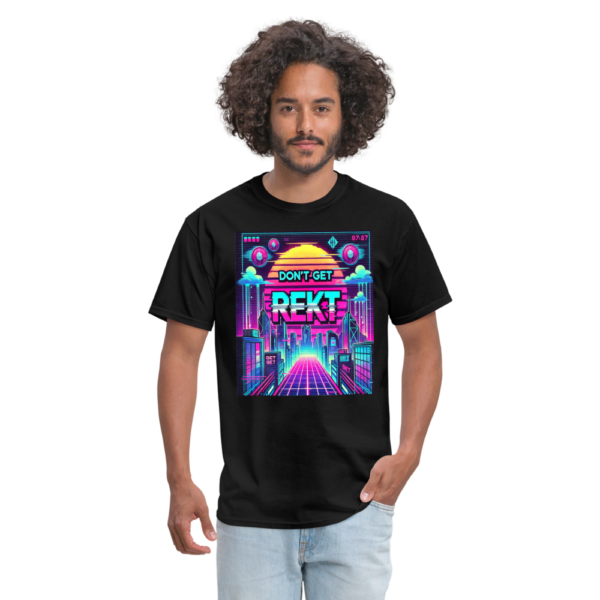
 Kai Cenat & AMP’s Robot Rumble: When a $70K AI Tried to Escape “Bullying” (And Why We’re All Questioning Humanity)
Kai Cenat & AMP’s Robot Rumble: When a $70K AI Tried to Escape “Bullying” (And Why We’re All Questioning Humanity)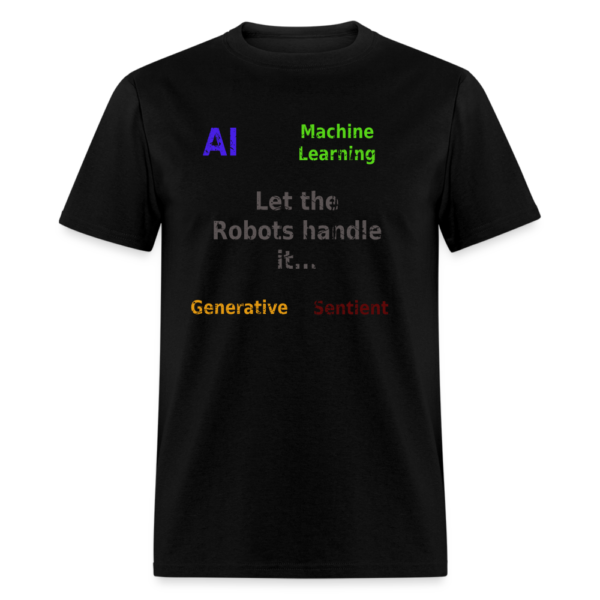

 .)
.)



